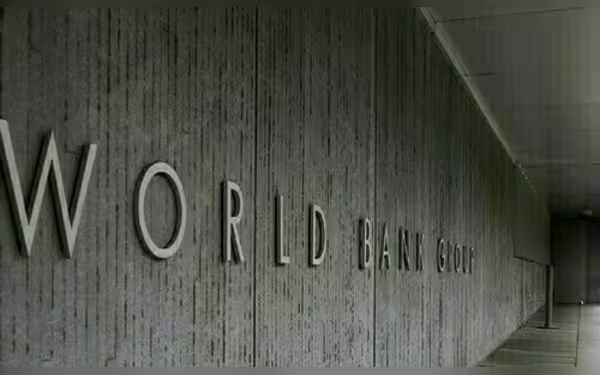Saturday, November 16, 2024 07:51 PM
World Bank Upgrades Pakistan Growth Forecast Amid South Asia Recovery
- World Bank raises South Asia growth forecast to 6.4 percent.
- Pakistan's economic growth projected at 2.8 percent for fiscal year.
- Women's labor force participation crucial for long-term economic growth.
 Image Credits: dawn
Image Credits: dawnWorld Bank raises South Asia growth forecast to 6.4%, highlighting Pakistan's recovery and the importance of women's labor force participation.
The World Bank has recently updated its growth forecast for South Asia, raising it to 6.4 percent for the year 2024. This is an increase from the earlier estimate of 6.0 percent. The adjustment comes as a result of quicker recoveries in countries that have faced economic crises, particularly Sri Lanka and Pakistan. Additionally, the strong domestic demand in India has played a significant role in this positive outlook.
According to Martin Raiser, the World Bank Vice President for South Asia, the region is witnessing the emergence of a new class of consumers in India, which is driving the economy forward. He noted, "You have recoveries from crises in Sri Lanka and in Pakistan, you also have a tourism-led recovery in Nepal and Bhutan." This statement highlights the interconnectedness of the economies in South Asia and how recovery in one country can positively impact others.
For Pakistan specifically, the World Bank has projected an economic growth of 2.8 percent for the current fiscal year, which began in July. This is an improvement from the previous estimate of 2.3 percent. The recovery in manufacturing and the easing of monetary policy are key factors contributing to this upward revision. This growth forecast positions Pakistan as a crucial player in the South Asian economic landscape.
The World Bank's report also indicates that South Asia is now recognized as the fastest-growing emerging economy region, with a robust growth projection of 6.2 percent annually for the next two years. Raiser emphasized that there is "significant upside potential" for growth, provided that countries in the region continue to implement necessary economic reforms. This is a critical point, as sustainable growth often hinges on the ability to adapt and reform economic policies.
In contrast, India’s economic growth forecast has been revised to 7 percent for the current fiscal year, up from an earlier estimate of 6.6 percent. This growth is attributed to a rebound in agricultural output and increased private consumption. Meanwhile, Sri Lanka, which is recovering from a severe economic crisis, has seen its growth forecast rise to 4.4 percent this year.
However, not all countries in the region are experiencing positive revisions. Bangladesh's growth forecast has been downgraded to 4.0 percent from 5.7 percent, reflecting challenges such as a slowdown in garment exports amid social unrest.
One of the key recommendations from the World Bank is to enhance women's labor force participation, which currently stands at a mere 32 percent, the lowest globally. The report suggests that increasing employment among women to levels comparable to men could potentially raise output by as much as one-half in the long term. Raiser stated, "Bringing more women into the labor force could add significantly to the production potential." This insight underscores the importance of inclusivity in economic growth strategies.
The World Bank's revised growth forecast for South Asia, particularly for countries like Pakistan, reflects a cautious optimism about the region's economic recovery. As nations navigate the complexities of post-crisis recovery, the emphasis on economic reforms and the inclusion of women in the workforce will be vital for sustaining growth. The path ahead may be challenging, but with the right strategies in place, South Asia has the potential to emerge stronger and more resilient.













